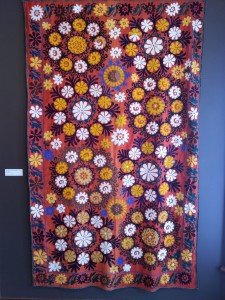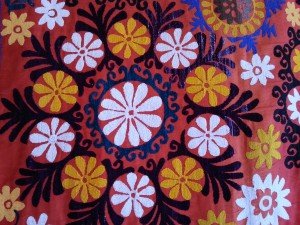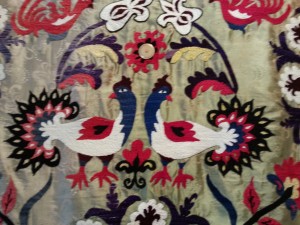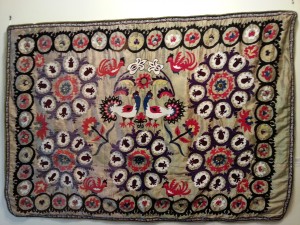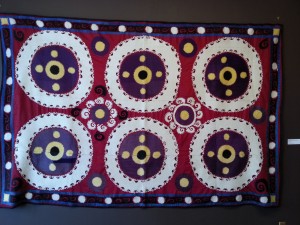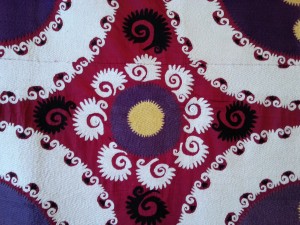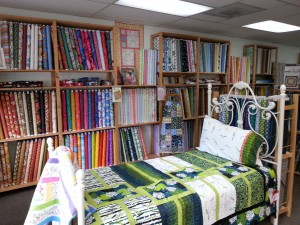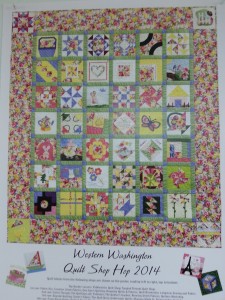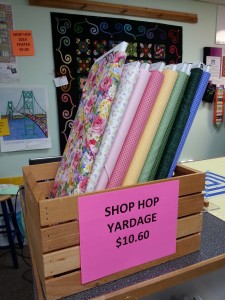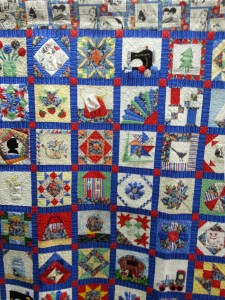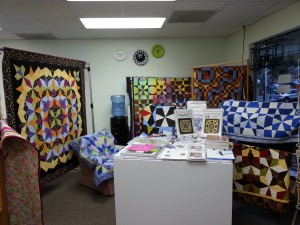Ten days ago, I was fortunate to visit the La Conner Quilt & Textile Museum where there was a stunning exhibit of Suzani embroidery from Uzbekistan. These pieces, covered with dense embroidery, are bold and colorful. They are recent acquisitions for the museum from the Miriam Wosk Family Trust. They will be displayed for one more day, so if you are in the La Conner area, get over there to see them!
This floral example was made in the late 20th century. The word “suzani” is derived from the Persian word for needle.They are traditionally created in the western region of Central Asia, including Uzbekistan, Kazakhstan, Kryrgystan, Tajikistan, and Turkmenistan. They remind me of the beautiful embroidery I saw in Western Mongolia, the Kazakh area of the country. Natural motifs are often the theme. Here is my favorite one with lovely birds.
This one was made in the first half of the 20th century.The suzani is both decorative and functional. Often they are created when a daughter is born as part of her dowry. Women work together and several suzanis may be presented to a groom on the girl’s wedding day.
This maroon suzani bedspread was made in the late 20th Century. The stitching in suzanis is dense and includes chain stitch, buttonhole stitch and couching. They sometimes look as though they are woven. The larger ones are often created in smaller panels, two to six depending on the size and the design. The Kazakh pieces I saw in Mongolia were all done with chain stitch and the stitching was not so dense.
